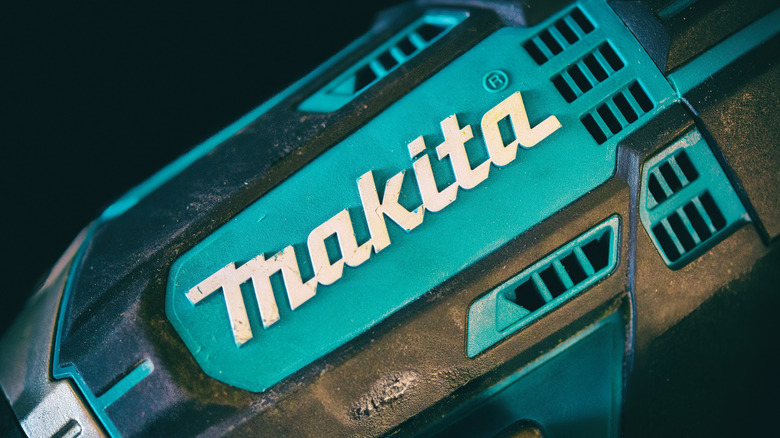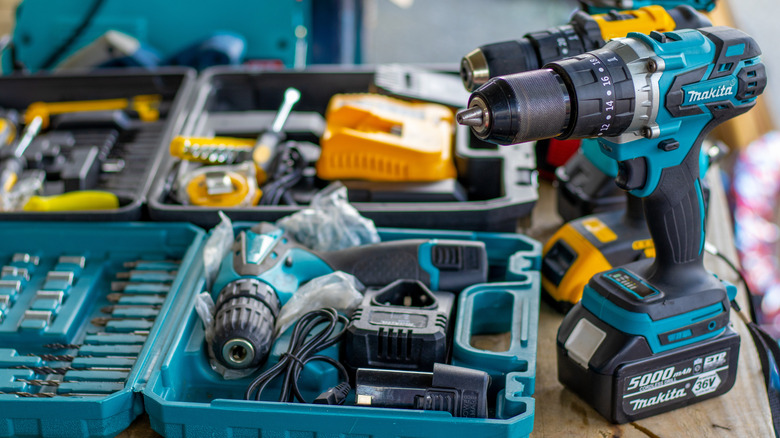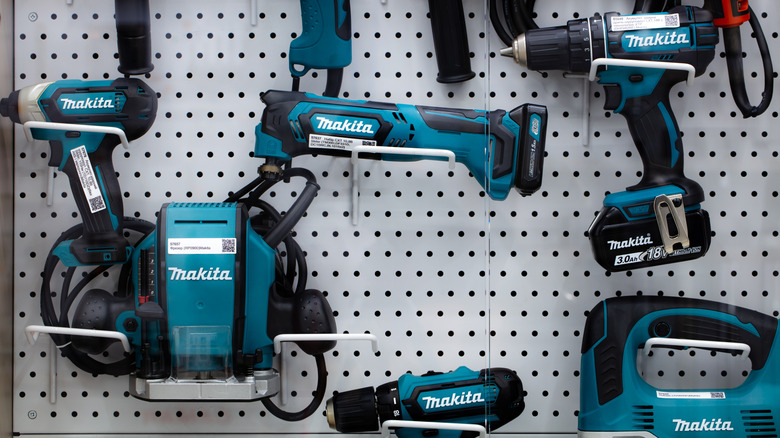Is Your Makita Tool An Original Or A Fake? There May Only Be One Real Way To Know
Even in a business landscape chock-full of quality competitors, Makita has remained a major name in power tools. The brand's catalogue includes everything from the basics like drills and saws, to more unique equipment needed for specific jobs. It continues to innovate, too, with several new Makita tools released in 2025 worth adding to your collection. Unfortunately, counterfeit Makita tools have seeped their way into the marketplace, and there's no guaranteed way to spot them. In fact, the company itself only recommends one way of avoiding such products altogether.
Makita takes calls from 8:00 am to 7:45 pm EST, Monday through Friday, at 1-800-462-5482. Per a discussion had over its technical support customer service line, pinpointing fake merchandise isn't as simple as finding the serial number on your Makita tool or battery and running it through a database to identify it as a genuine product. The folks behind the brand just recommend being mindful of the source you're buying Makita products from. If it seems untrustworthy, or the price is too good to be true, you're likely looking at fraudulent merchandise. Avoid the likes of eBay and stick with reputable sites and stores like Home Depot if you want to avoid fakes.
If you're concerned a tool you have currently isn't the real deal, you're not totally out of luck. While convincing, fakes aren't perfect, featuring some tells that could reveal their counterfeit origin.
Other ways to potentially spot fake Makita tools in-hand
At this point, fake Makita products have become so pervasive in the tool marketplace that if you buy used or new from a shady source, you could end up with one. While Makita may not have a solid method of identifying such tools, you could take a crack at it on your own. If you have a Makita-branded tool in hand, and want to make sure it's the real deal, you can try comparing it to one that you know is genuine. More specifically, you can compare the overall build quality of the two and look for discrepancies. Does the material feel cheaper or lighter? Does the performance quality of the tool leave something to be desired? If so, you could have a fake Makita on your hands.
If the physical attributes are pretty close or even exactly the same, labels could be a giveaway that a Makita tool is fake. It's not uncommon for the labels and logos on counterfeits to appear unusually blurry or contain typos. This is another situation where comparing the tool to a known genuine equivalent could come in handy. Still, comparison isn't a perfect method of separating real Makita merchandise from the fakes. Thus, you should be discerning as a buyer and only purchase from reputable sources. It's not ideal, but it's the best one can do to protect themself from tool scams.
What to do if you end up with a fake Makita tool
If you find yourself with a counterfeit Makita tool, the first thing to do is demand an exchange or a refund. Ideally, they'll be willing to work with you on the matter. Websites like eBay where these bootlegs tend to flourish — despite the website's anti-counterfeit efforts — streamline the process of getting a refund and returning the item, so it shouldn't be too much of a hassle.
In the event the Makita tool you've purchased was not only fake, but an active danger, or you want to take further action against those responsible, you can go further. Since they don't come directly from the company, Makita doesn't take any responsibility for fake tools and batteries, and damages potentially sustained from them. Instead, you can reach out to the likes of SaferProducts.gov, which take fraudulent and potentially harmful products being sold quite seriously. It and similar entities will hear your story and warn the public of such wrongdoing, helping others to avoid paying good money for knock-off items.
In the age of online shopping, with folks looking for the best deals possible, and vendors getting their hands on products from all over, bootlegs are unavoidable. Fake Makita tools are everywhere, but by knowing where to shop and what to look for in the products themselves, they can be spotted and avoided entirely.


